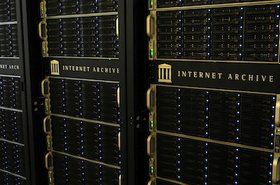Now is the time to optimize your data center operations strategy to cut costs and conserve energy. With the global economy changing the landscape of the digital infrastructure industry, the cost of capital and energy are impacting operating expenses (growth and current operations).
Moreover, as the building boom continues, the short and long-term consequences have begun unfolding. On the capital budget side, development costs are up 35 percent over the last three years; prices increased 15 percent, paybacks are getting longer, and development yield has gone from 12-15 percent to 7-9 percent when it costs 6-7 percent.
On the operating budget, the cost of energy is the most significant impact on existing operations. It has far surpassed the escalators built into leases and owners’ budgets. For example, the Uptime Institute IT Spending Survey recently stated: "Enterprise and colocation operators have seen the greatest unit cost increases in power over the past year." The Uptime Global Data Center Survey also said, “data center equipment vendors are caught between high demand and lingering supply chain problems.”
And, according to McKinsey, “the operating margins of colocation companies are under pressure from prominent cloud vendors. As a result, they are signing shorter-term contracts.” This is pressuring everyone, including investors’ expected yields, colocation margins, hyperscaler budgets and, in general, increased costs are outpacing increased budgets year over year. With the US data center demand forecasting to grow by 10 percent a year until 2030, it is more important than ever to reduce costs, risks and energy consumption.
Let's talk about strategies you can implement to be a catalyst for positive change while reducing costs.
When it comes to improving operations strategies, the three most significant efficiencies can be gained at the site level. The shared key foundational element to all of them is effective training as part of a comprehensive workforce development program. Before you can execute any of these initiatives, you have to have the training in place to be able to execute.
The three fundamental initiatives are:
- Unify site-level functions into one team
- Leverage technology
- Self-perform manufacturer’s maintenance
Unifying site-level functions
Whether you outsource site-level services or do them in-house, chances are your facility is organized in a manner comprised of traditional practices that build three distinct teams of information technology, critical environments and security.
With the advances in technology and re-skilling of site-level resources, the optimal solution is to consolidate these teams into one multi-skilled team of operators rather than the legacy organization that siloes multiple functions from corporate organizations down to the site-level. The consolidation reduces costs and builds a highly efficient team environment mitigating risk that will drive more significant results from retention to performance. Retention leads to cost savings for human resources and training groups with fewer positions to backfill and train.
The multi-skilled operational model also promotes career development and advancement as well as the improvement of job satisfaction, with organizations seeing, on average, a 47 percent increase in employment duration for employees who perform multi-skilled functions. The importance to employees is monumental – a recent McKinsey article stated that the top reason for people leaving jobs between April 2021 and April 2022 was a lack of career development and advancement. Furthermore, the 2022 Uptime Global Data Center Survey mentions, “attracting and retaining qualified staff remains highly problematic for many operators.”
But to implement this initiative effectively (resulting in 35 percent+ savings in staff costs), it is vital to have an established training program. This will also require redefined job families and an approach to career planning and HR management that will resolve any talent shortage you may be experiencing.
Leveraging technology
Invest in the systems that will allow you to implement an effective condition-based maintenance program and monitoring with predictive analysis. Condition-based maintenance aims to perform when it’s needed – and not before. Technicians only perform service when evidence (the indicators) supports it. This leads to reduced risk (since the equipment is touched less often), cost savings in spare parts, lower labor costs, and reduced unplanned downtime compared to preventive maintenance, which is calendar-based and performed on a consistent schedule. Another critical function of the technology is effective monitoring and predictive analysis that becomes routine and reduces incidents.
Embracing technology requires constant change, and taking the first step will help you institutionalize the momentum of continual improvement. Most data is already being collected, whether it’s hours of use, remaining useful life, oil, pressure and vibration analysis, and temperature. The key is training staff to collect or verify that technology captures the data and build analysis models that review trends and early thresholds that indicate when maintenance should be scheduled and performed. Once implemented, you should expect savings in maintenance of 20 percent, parts and consumables costs of 40 percent as a result and long-life expectancy on equipment. Finally, advances in AI, robots, drones and many others are being tested and should be embraced as they will lead to further efficiencies.
Self-perform manufacturer’s maintenance
Manufacturers are struggling to staff their field services organizations. By partnering with them, your on-site teams can take over routine maintenance, such as the monthly and quarterly reviews, without risking warranties. Most of these activities involve inspecting, verifying, reviewing, and recording the integrity, condition and cleanliness of assemblies, equipment and systems (far less complex than Original Equipment Manufacturer (OEM) maintenance which involves calibrating, changing and updating these components).
The typical annual maintenance budgets for 1MW range from $150-200k per year, and as you scale up, there are efficiencies, but for large sites, the number is still significant. For example, at the 24MW level, we see up to 43 percent savings consistently by self-performing the monthly and quarterly maintenance. You can do the math for your site, and you will realize that it is well worth pursuing, but (yet again) you need to start with training and then update your methods of procedures and train on the new procedures.
Overall, a comprehensive data center operations strategy should prioritize efficiency, reliability, security, and flexibility to meet the organization's evolving business needs.
More in The Management & Operations Channel
-

-

-

Discussion Skills & Worforce Hosted Lunch Briefing


